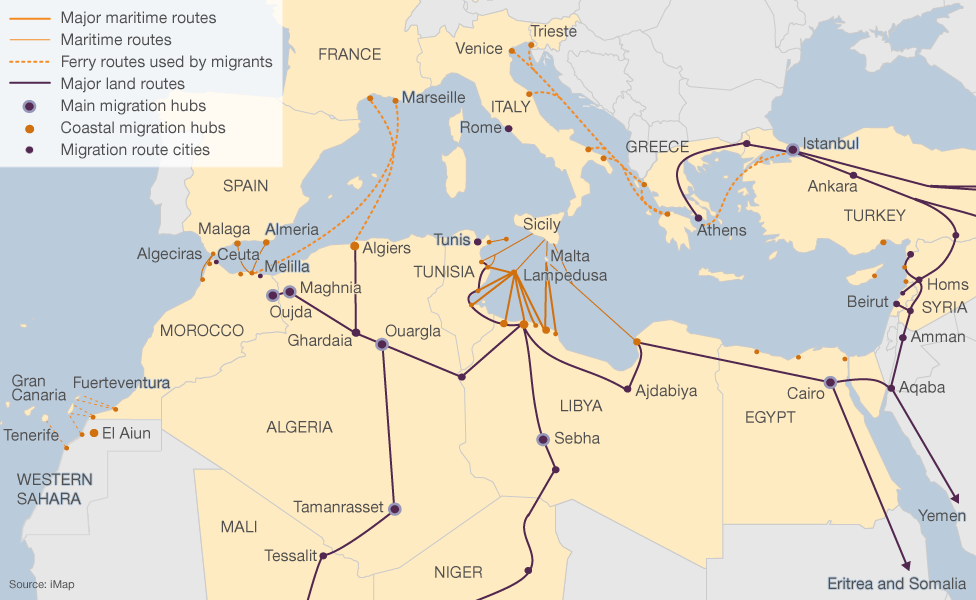Lampedusa is a Italian island with an area of only 7.8 square miles and a population of under 5,000. With well-established fishing and tourism industries, the island has recently added a new type of traffic: people. Italians call these asylum seekers "clandestine" which means "the secret ones."
Referred to as the "gateway to Europe," Lampedusa received 117,000 immigrants from July, 2013 to July, 2014. Most of these immigrants are from Eritrea, Tunisia, Somalia, and Libya, who pay smugglers to get them to European islands (although geologically on the African plate) which include Pantelleria, Linosa, Lampione, Lampedusa, and the nation of Malta. Once on these islands, immigrants ask for asylum from the government in the hope that they will be brought to mainland Italy, from where they can continue up into Northern Europe.
The boats are packed with immigrants, and sit low in the water, making them susceptible to capsizing. There are usually no lifejackets and most passengers cannot swim. Hundreds have drowned making this journey. Sometimes the smugglers are still with the boat when the Italian Coast Guard arrives, but often they have abandoned their vessel and left passengers adrift in the the sea. It is estimated that 19,000 immigrants have drowned in the last 20 years while attempting to cross the Mediterranean.
(http://voiceofthepersecuted.files.wordpress.com/2013/10/immigrants-flee.jpg?w=730&h=369)
It is clear that asylum seekers are not going to stop attempting this journey, regardless of the dangers. Those who are sent back attempt the journey again, and smugglers put more money in their pockets.
(http://www.newyorker.com/magazine/2014/04/21/the-anchor)
There is some good news. The horrific tragedy that happened last October triggered changes in Italy's immigration policy and resulted in a sea search-and-rescue program called, "Mare Nostrum" or "Our Sea." This operation aids asylum seekers who have made it into international waters. According to the Italian navy, this program has rescued 44,500 asylum seekers from the sea. Unfortunately, this operation seems to be encouraging more people to attempt the dangerous crossing in increasingly dilapidated ships. While effective, Mare Nostrum costs the Italian government 11.4 million annually, and will soon be discontinued. Italy is only just beginning to receive real help from other E.U. nations in its ocean rescue missions. Once the asylum seekers reach shore, they are trapped indefinitely. The E.U. is bound by the Dublin Convention, which requires immigrants to apply for asylum in the first country they enter. This puts enormous strain on Italian processing centers and causes unbelievably long waiting periods.
For those interested, here is a map outlining Mediterranean immigration routes




No comments:
Post a Comment